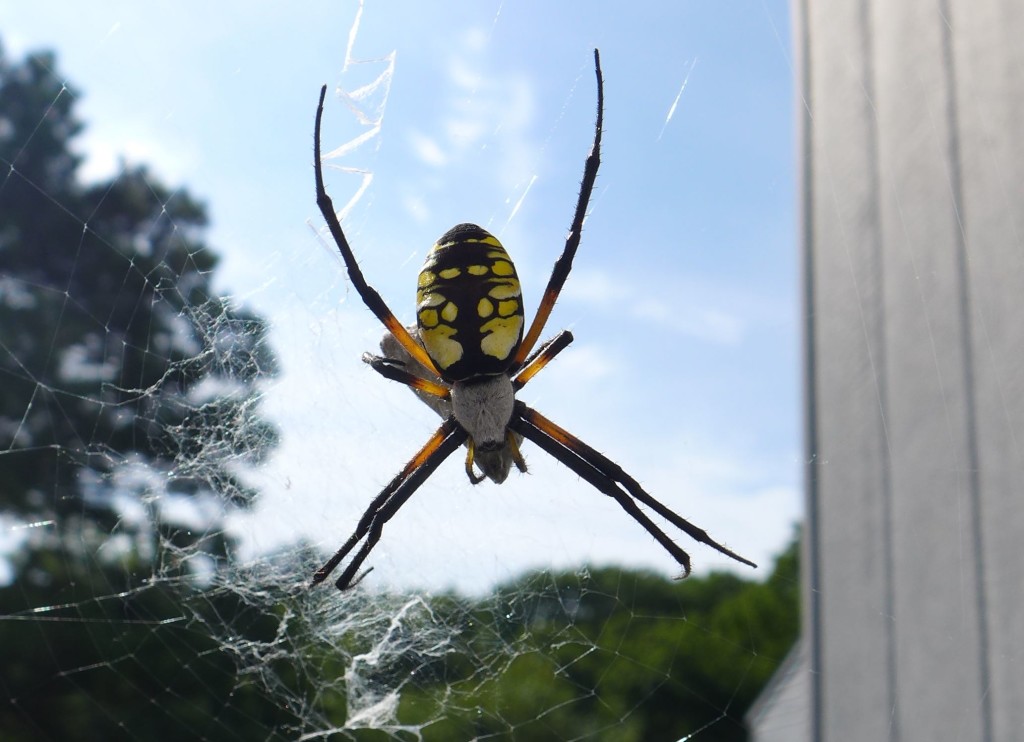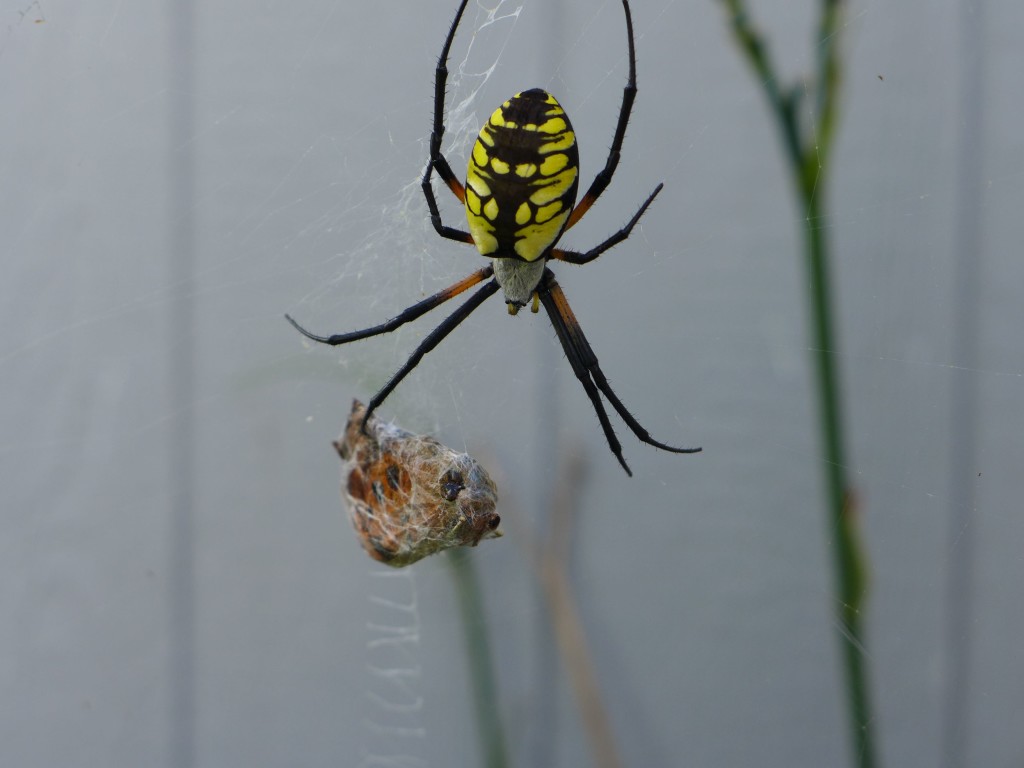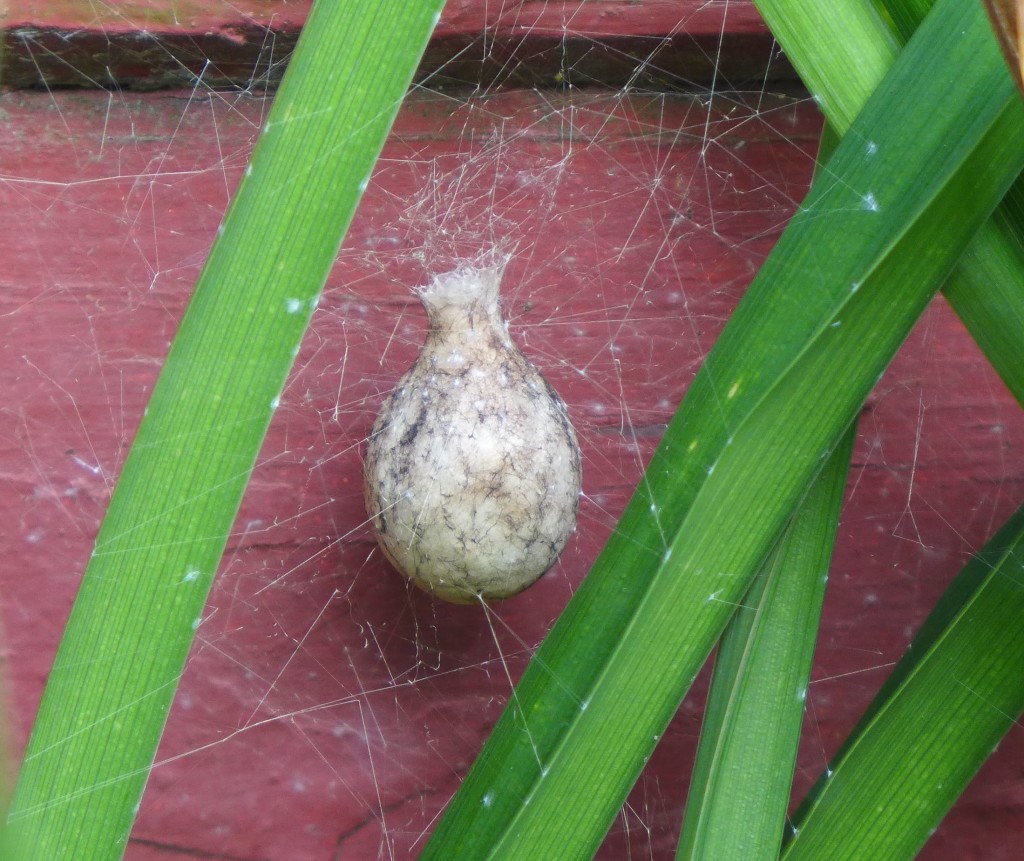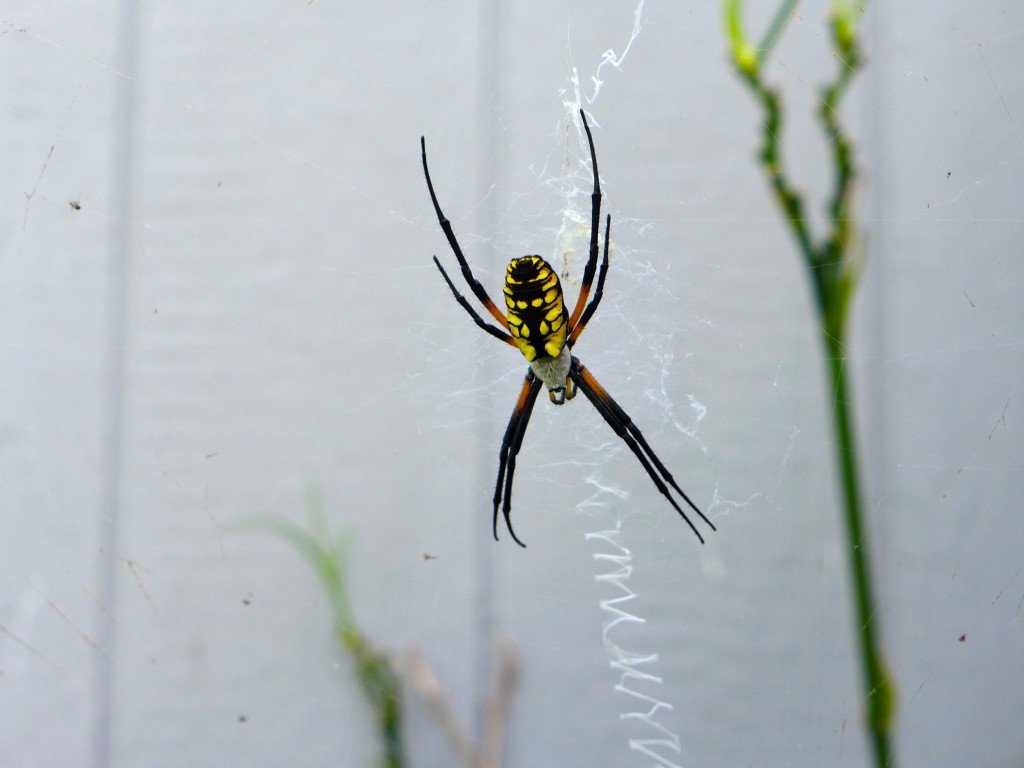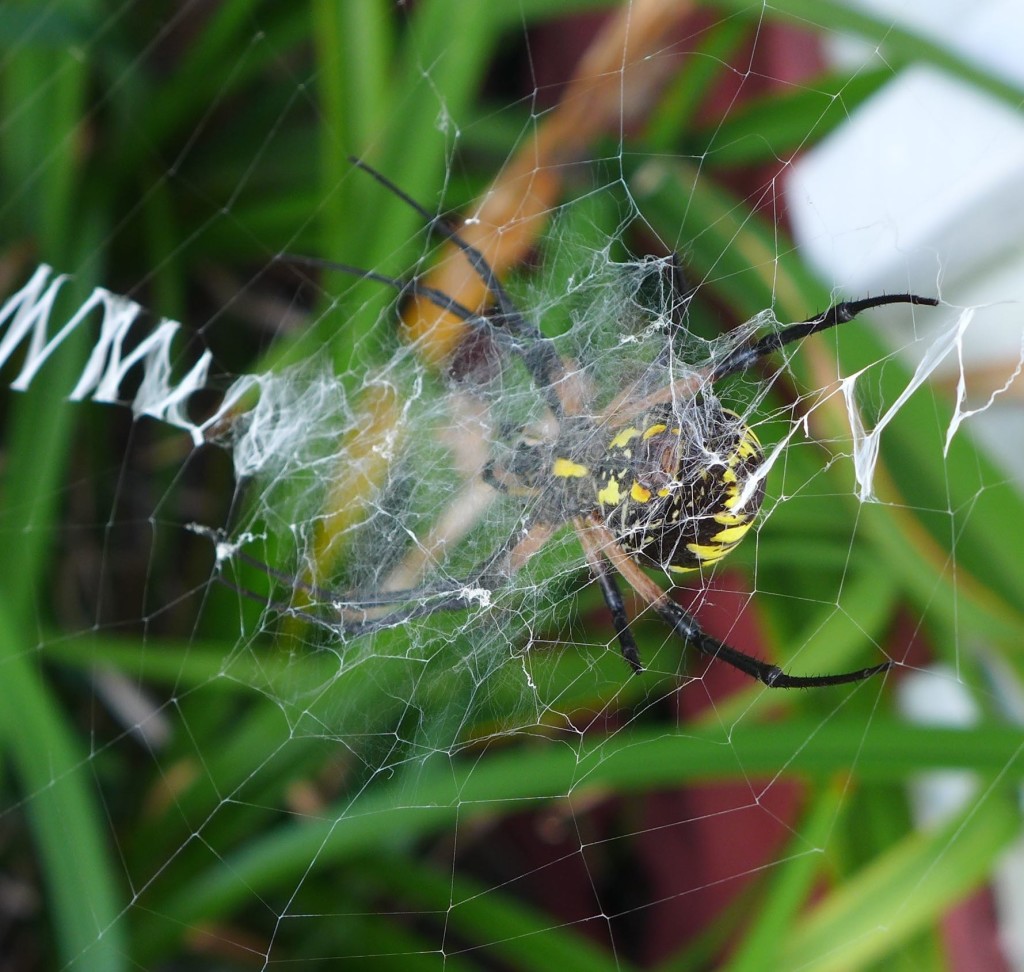If you’ve been following along with our Instagram feed, then you’ve seen a few photos of the spider living at the beach house. We’ve all become a bit enamored with her and wanted to share more information. First a formal introduction, meet Argiope aurantia, common referred to as the black and yellow garden spider.
Even we can admit that she looks equal parts mesmerizing and scary, fortunately, she’s relatively harmless. She has no interest in biting humans, and would only do so if grabbed (although she would rather drop down from her web and hide). If she does bite, the result is said to be no worse than a bee sting. Did you get that? If you come across a garden spider in your yard, don’t worry, don’t scare her away, and definitely don’t kill her!
Argiope aurantia females build large beautiful webs in tall vegetation near the edges of fields or yards. Ours made its home in the lilies by the back porch – a perfect spot for observing every time we go in and out the door! These are considered one of many orb spiders because their web is round. Do you see the zigzag pattern down the middle of it? That dense zigzag of silk is called a stabilimentum. The purpose of the stabilimentum has been debated. It may be used to help larger animals see and avoid the web, it may be meant to help disguise the spider as she sits in the middle of the web, or perhaps it attracts insects? The one thing scientists know is that they only find stabilimentums on the webs of spiders that are active during the day.
About a week ago, we walked outside and the spider was missing! We were all a bit bummed about it, but since she spent most of the summer at this spot, we were hoping that she would be back. A few hours later, as I was walking past the web, I found her! Can you see her in the photo below?
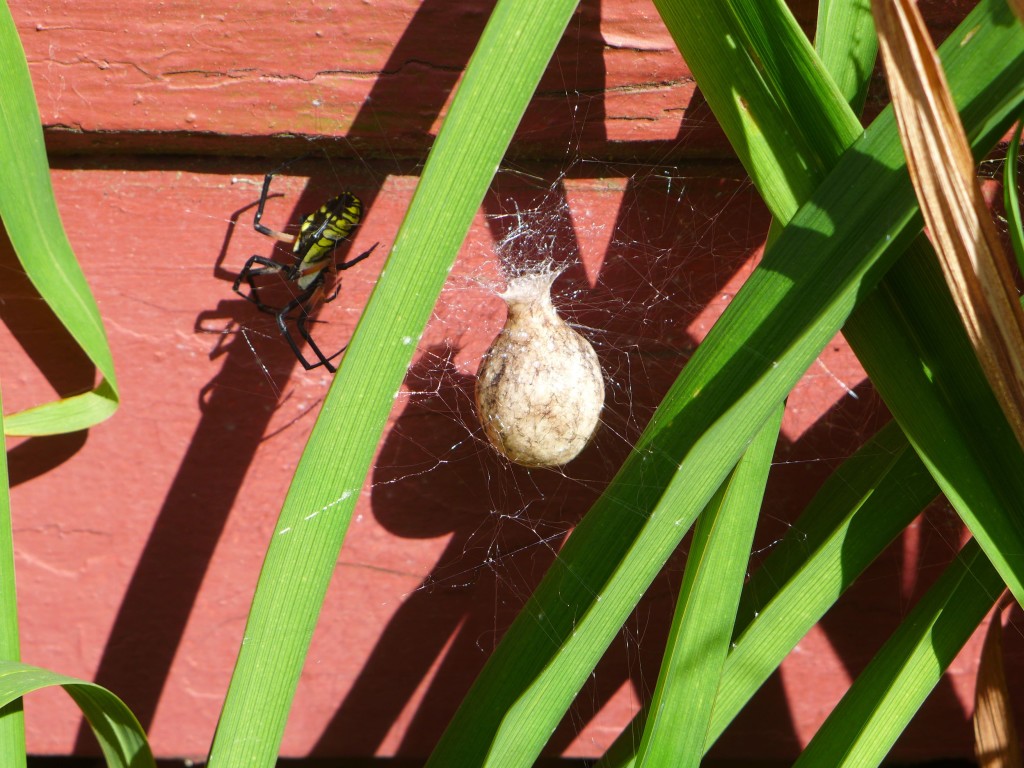
She’s hanging from the porch near an egg sack! These spiders mate once and then they are able to produce up to four egg sacks over the course of the summer, each with over a thousand eggs inside. So far our spider has produced two egg sacks, they’re hanging inches apart from each other along the porch. The sacks will remain in place over the winter, and then the baby spiders will hatch next spring. The babies are so small that they look like dust! I don’t know if you can tell from the photos, but immediately before laying the eggs, her body looked huge, and immediately afterwards it looked like a deflated balloon.
As you (hopefully) know, one of the benefits of allowing spiders to live around your house is that they catch insects. We’re always hoping that their nets are magnets for all of the pesky mosquitoes at the beach, but they’ll take anything that gets caught in their net. So far we’ve seen her wrapping up horseflies, butterflies, dragonflies, and even a cicada. When an insect gets caught in her web she injects it with venom to kill it and wraps it in silk for later consumption.
Argiope aurantia keep their webs relatively clean. Every few days you’ll find them removing the circular lines on their web and replacing them with fresh silk. She eats the old silk as its removed. We are not sure if she’s just recycling the nutrients used to make the web or if she’s consuming the silk in order to receive the nutrition from the minuscule bits of insects that are stuck to it.
In the few short weeks that we’ve been here, all of us have learned a lot more about spiders, and it’s all due to having this visitor in our yard. First we wanted to know what kind of spider it was, then we started asking questions about her web and eating habits. Soon we found her egg sack and that lead to even more research. It’s been fun to have everyone learning together; someone will learn a fact and share it with the house, then someone learns something else, and on and on. If you have kids in the house, this is such a great learning environment, especially since they’ll get to see everyone learning together and doing research.
Even though your first instinct may be to shoo away something that sends a shiver up your spine, don’t do it! Instead act with caution until you learn a bit more : what is the new creature and how dangerous is it? From there, you can decide if the animal is a true threat to your welfare. If it looks scary, but really isn’t (like our spider) we encourage you to get over your fears and invite your new neighbor to stay!

